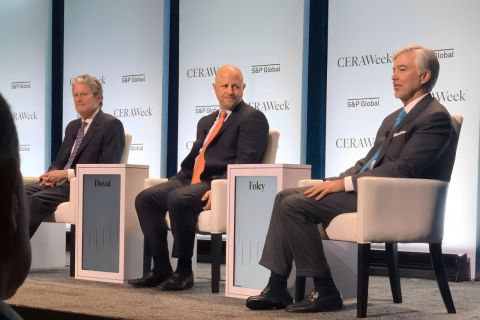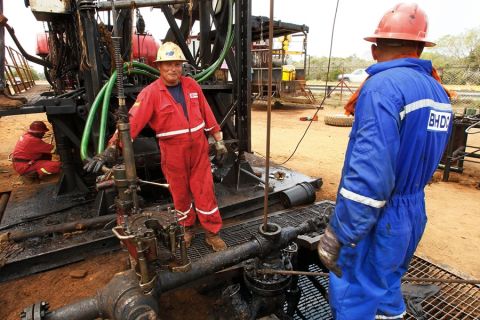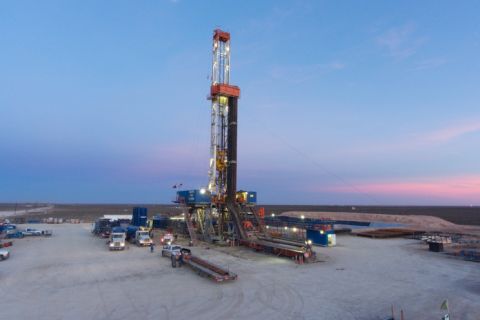
Analysts said some measures show capex spending might be significantly underfunded and that “critical amounts of investment” are needed. (Source: Shutterstock.com)
As strong oil prices have kept E&Ps coffers full even during an erratic 2023, experts are warning that the sector should keep an eye on capex underinvestment, cost of capital and other potential pitfalls during a time of plenty.
Muhammad Laghari, senior managing director at Guggenheim Securities, said energy is now more than 12% of global GDP. The last time it was at that level was 1979 and 1980. And although the energy industry is different now, the percentage is significant enough to warrant close attention.
“We’re well into testing limits that we haven’t tested in the last 40-plus years as a result of this underinvestment,” Laghari said at Hart Energy’s America’s Natural Gas conference on Sept. 27. He added that valuation multiples are still at steep discounts.
Spencer Rippstein, managing director at Piper Sandler, added that some developments, mainly the invasion of Ukraine, brought energy needs into sharp focus and ESG initiatives to their peak.
“While companies are performing well—free cash flow is great—we continue to see valuation that is below pre-COVID levels,” Rippstein said. “Cost of capital still remains elevated and it makes doing deals tougher.”
Cost of capital is largely offset by bigger companies’ bountiful free cash flows, but Laghari spelled out how expensive it is for the few small companies that may need it. He said reserve-based lending and some securitizations have interest rates at about 8.5% interest.
Scale matters, Laghari said, and the cost of capital is particularly tough for companies with market capitalization under $1 billion.
“It's hard to compete when you don't have the lowest cost of capital, and the difference just keeps growing bigger, not just in terms of the cost of capital but also the size threshold where there is a differentiation,” he said. “What does that mean from a valuation multiple perspective? Free cash flow yield is … focused on versus EBITDA multiples … and there is a 6% difference between that large cap versus the smaller cap.”
The need to spend might be greater than expected: Rippstein pointed out that global upstream capex has declined by nearly a third since 2014. He said capex is particularly low in North America.
“The rest of the world … they’re spending. They realize the problem,” he said.
Laghari said the supermajors’ capex is calculated in nominal dollars. Calculating them in 2022 dollars shows a significant drop in capex spending.
“We’re actually spending 60% to 70% less on inflation-adjusted capex than we were at a time when we were matching demand,” he said. “So, there was critical amounts of investment that is needed in the sector that is not being spent right now.
“We may not feel it in certain commodities in certain areas, but the whole world is feeling it.”
Rippstein also said much lower private equity investments in conventional energy have slumped.
“What you saw from 2014 to 2017 was a number of fundraising cycles that showed $30 plus billion in capital raised. More recently [it’s] not so much, an average of about $2 billion per year,” he said.
Recommended Reading
Investors: Energy Transition is on Policy-driven Life Support
2024-03-20 - Injecting private capital into the energy transition is worrisome because some projects couldn’t survive without government incentives, panelists said at CERAWeek by S&P Global.
Utah’s Ute Tribe Demands FTC Allow XCL-Altamont Deal
2024-04-24 - More than 90% of the Utah Ute tribe’s income is from energy development on its 4.5-million-acre reservation and the tribe says XCL Resources’ bid to buy Altamont Energy shouldn’t be blocked.
Guyana’s Stabroek Boosts Production as Chevron Watches, Waits
2024-04-25 - Chevron Corp.’s planned $53 billion acquisition of Hess Corp. could potentially close in 2025, but in the meantime, the California-based energy giant is in a “read only” mode as an Exxon Mobil-led consortium boosts Guyana production.
US Decision on Venezuelan License to Dictate Production Flow
2024-04-05 - The outlook for Venezuela’s oil industry appears uncertain, Rystad Energy said April 4 in a research report, as a license issued by the U.S. Office of Assets Control (OFAC) is set to expire on April 18.
APA’s Permian to Pick up Production Slack Amid Overseas Headaches
2024-02-26 - With various overseas headaches, Houston-based APA Corp. aims to boost its Permian Basin volumes and integrate its Callon Petroleum acquisition when it closes in the second quarter.





